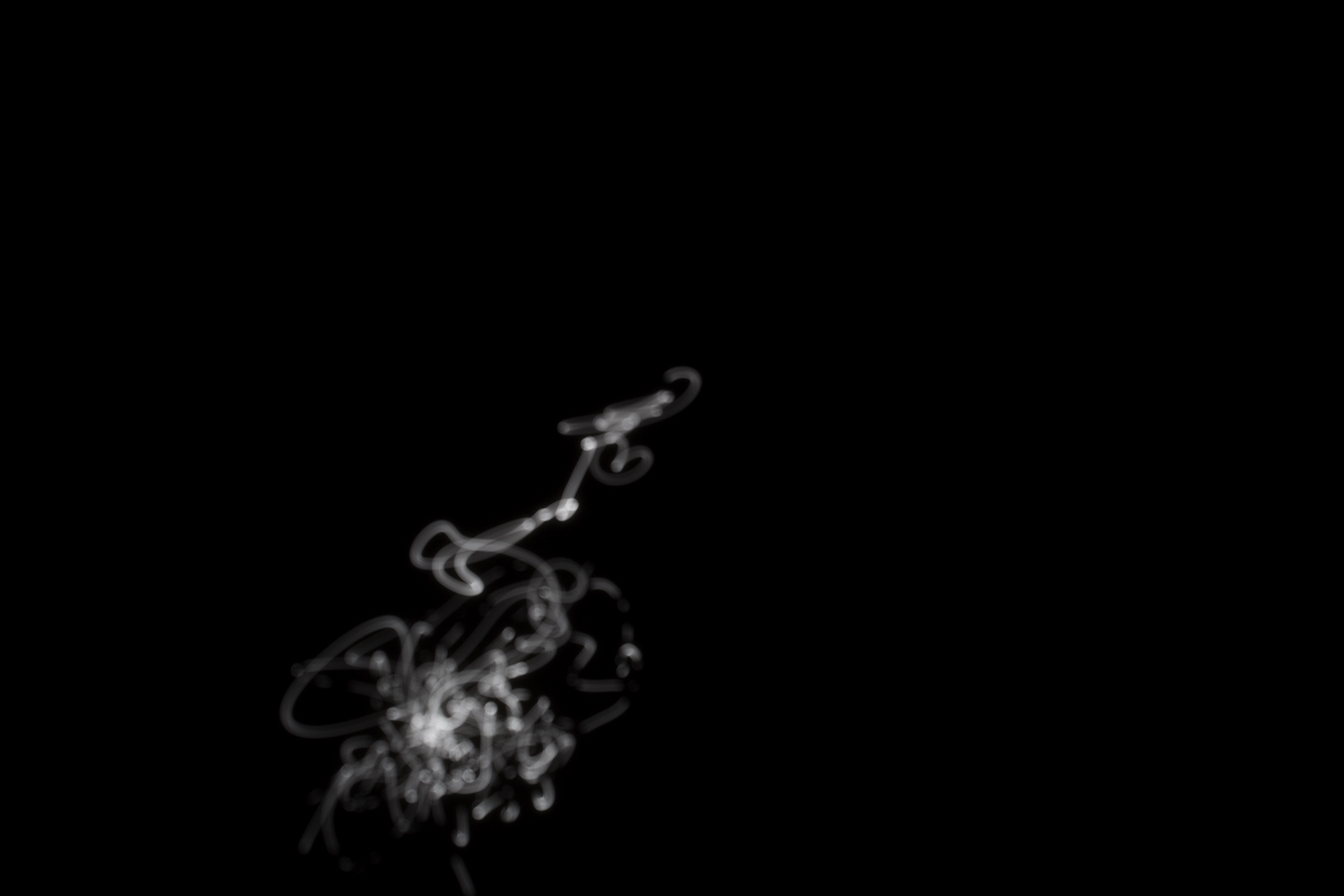
Moon Light drawing Image 7174
Image 7174 bears some similarity to the trace line of an insect as it moves manically back and forth in flight or the garbled signature of a famous writer, or something that you might do if you were talking on the phone to someone whilst half your mind is preoccupied by something else but unclear as to what exactly. The difference here is that the image seems to have more depth and of course is naturally reversed with the line being white or bluish in colour while the background is a deep almost infinite black. It also has references to particle physics and the decaying particle traces resulting from atomic nuclei photographed during particle accelerator collisions.
This may be an over extreme examination of the image here discussed yet the elemental line drawing does have a number of related references, and it is the purity of the line and the elements that construct this image that makes it of interest.
Once we understand the image we are observing is derived from the manipulated light of the full moon then we have a slightly different understanding or admiration for the delicacy of movement inherent within the image as it floats in the vacuum of deep space to be then captured down here on earth.
Modern image making traditionally requires a biro or a pencil, paints or such like to convey the users emotion directly into a mark on paper or canvas that then becomes preserved and solid. Photography on the other hand is usually a way to capture everyday standard images, any images and would not normally be concerned or connected to a way of producing drawings. Eastman’s approach takes a modern day medium such as the digital camera and uses it in a highly minimal yet precise way to produce complex assemblages of line recorded onto digital chip by a means of directing moonlight towards and through the lens, either deliberately in a controlled manner or wildly in a more haphazard random and abstract manner.
Einstein once famously commented “the moon does not happen to appear only when we look for it”, in an argument about quantum mechanics, that the presence of the experimenter or onlooker had a profound effect on the experiment, enough to vastly change its outcome. The moon of course is always there, or at least we assume it is, constantly reflecting the gaze of all who view it, like a large dusty mirror. The moon as observed by Newton is always falling, but falling in such a way that it falls around the earth.
Moonlight is a reflection of sunlight and is of course is the primary ingredient of all images. In essence this renders the light to be arguably in its purest form, slightly subdued after being ricocheted by way of the moon and then delicately and finely adjusted as it then enters the receptacle of the camera body. The image here is purely a beam of light and otherwise devoid of detail, colour or emotion, which in many ways lends the picture a highly purest ideology.
In his book on the philosophy of physics Heisenberg comments that if atoms and molecules devoid of colour or smell are the basic building blocks of reality then all of what we see in the world is but a tapestry of complex illusion. Likewise art or images that tend toward a minimalist approach convey this element of fundamental reality perfectly by using the very basic make up of time and space to produce the work and thereby avoid the general clutter and distractions afforded by other means of image production.
James Henshaw
Financial Times Senior Arts & Literature correspondent